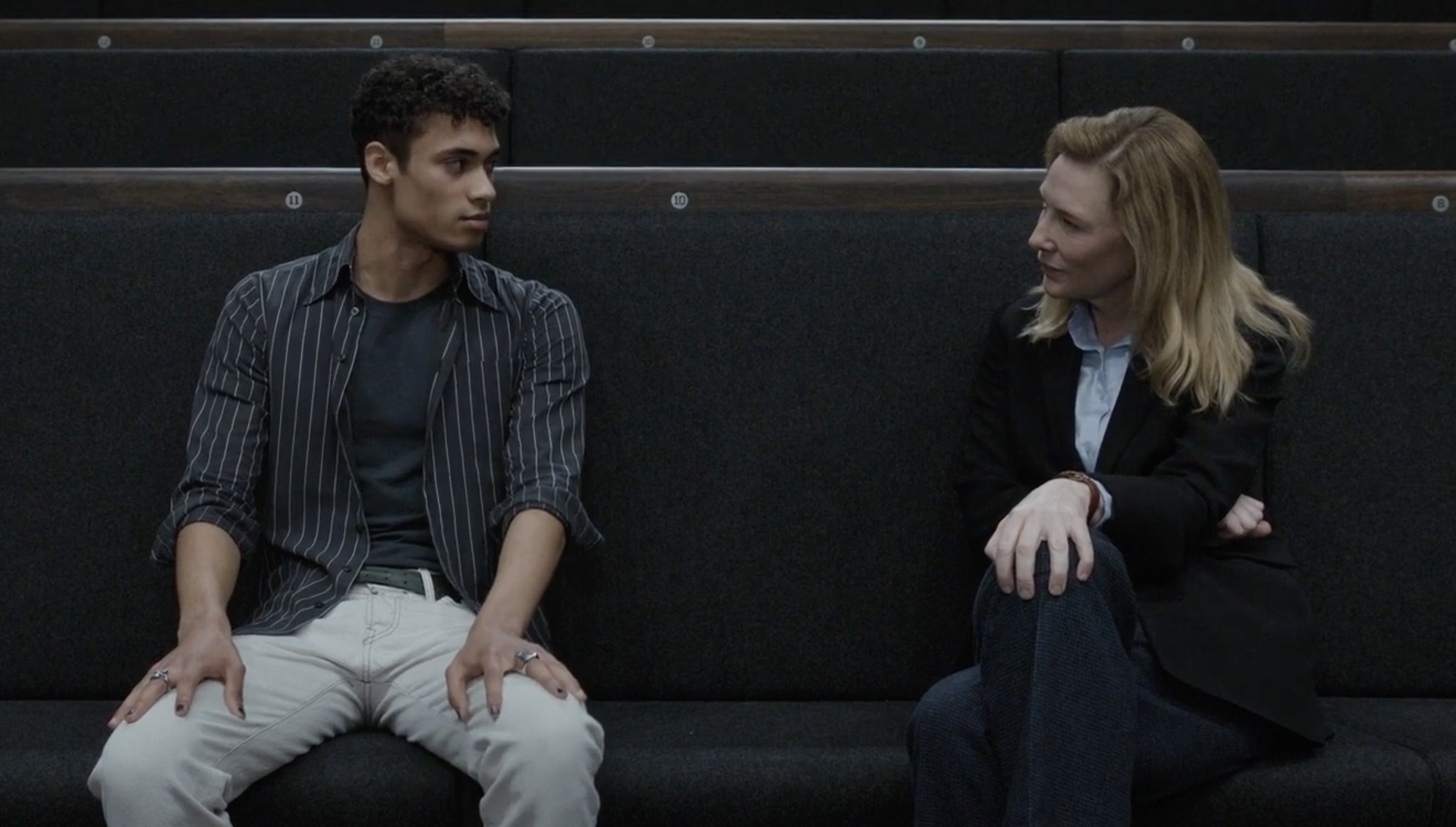Every year Hollywood Elsewhere subjects the leading Best Picture contenders to the Howard Hawks grading system. The legendary director is famed for having said that a good movie (or a formidable Oscar-seeker) always has “three great scenes and no bad ones.”
Hawks also defined a good director as “someone who doesn’t annoy you.” I don’t want to sound unduly harsh or dismissive but I’m afraid that the Daniels’ direction of Everything Everywhere All at Once…’nuff said.
How do the leading 2023 Best Picture contender films (numbering ten) rate on the Hawks chart? Here we go…
1. Edward Berger‘s All Quiet on the Western Front (Netflix): I’m thinking of several good or very good scenes that happen during the last 20 or 25 minutes, but no great ones. Paul (Felix Kammerer) and Kat (Albrecht Schuch) steal a goose from a farm they’d stolen from earlier, but Kat is shot by the farmer’s young son and dies. General Friedrichs (Devid Striesow) maliciously orders an attack to start 15 minutes before the 11 am ceasefire. And during the final battle Paul is killed with a bayonet, only a little before 11 am. AQOWF is indisputably urgent and compelling and often jarring, but I can’t honestly say that it contains a great scene, much less three of themk.
2. James Cameron‘s Avatar: The Way of Water (Disney): The climactic 45-minute battle aboard the sinking bad-guy craft — I think it’s fair to call this a great scene. But that’s the only one. Everything in this film is highly involving and proficient and certainly eye-filling, but emotionally and thematically it doesn’t really stay with you. Hawks shakes his head.
3. Martin McDonagh‘s The Banshees of Inisherin (Searchlight): It has a few weird scenes and a couple that stand out in a certain off-kilter way, but none that really sink in — not in a way that really kicks up the dust and feels great. If you disagree please tell me what I’m missing or have forgotten. The cute little donkey choking to death on one of Brendan Gleeson‘s stubby fingers? That was just weird. Kerry Condon gently rejecting Barry Keoghan‘s proposal to become Mrs. Village Idiot…kind of a gulp moment. Condon’s dialogue aside, everything said in this film is eccentric and moody and nhilist. And yet it stays with you after it’s over. How many great scenes? I’m sorry but none.
4. Baz Luhrman‘s Elvis (Warner Bros.): The first very good scene is when Colonel Parker (Tom Hanks) realizes that the unknown Elvis Presley (Austin Butler) is perfect rocket-fuel — a white guy who sings black, and who also has an intense sexual rapport with the girls in the audience. The second keeper is Presley’s 1968 NBC comeback special. The third is when fat Elvis sings “Unchained Melody” at the very end. These are certainly standout scenes, but I can’t honestly call them great. Hawks is underwhelmed.
5. Daniel Kwan and Daniel Scheinert‘s Everything Everywhere All at Once (A24): This alternate-universe hellscape subjects viewers to cruel and unusual punishment, regardless of whichever universe it may be happening in. For this is a 139-minute excursion into mind-boggling, brain-taffy torture. And yet it has one excellent scene, which happens inside Jamie Lee Curtis‘s IRS office at the end. Michelle Yeoh‘s Evelyn briefly slips into a daydream about her alternate selves and the multiverse blah blah, and when Deirdre asks if she’s paying attention Evelyn says, “I’m sorry…were you saying something?” Perfect! This is the only great scene though.
6. Steven Spielberg‘s The Fabelmans (Universal): Three strong scenes — Sammy giving direction to a young actor prior to shooting Nazis vs. good guys war footage, Judd Hirsch delivering his bedroom rant about destiny, and Sammy explaining to his dad that he created a muzzle-flash effect by sticking pins into certain frames in the celluloid. The one great scene is when blustery and cantakerous John Ford barks at Sammy about what constitutes interesting vs. shit-level horizon lines. Overall The Fabelmans isn’t a bad film, but it flunks the Hawks test.
7. Todd Field‘s Tár (Focus Features): One great scene: at Juilliard Lydia (Cate Blanchett) exchanges challenging, brittle words with Max (Zethphan Smith-Gneist) about his disdain for white cisgender composers like Johann Sebastian Bach. Intriguing creepy scene #1: Running through a Berlin park, Lydia is startled by a woman screaming in the woods, but she never explores what happened or who it was or anything. Intriguing creepy scene #2: While searching around in a dank basement of a rundown Berlin apartment building, Lydia is freaked by the sight of a huge black dog, or maybe a timber wolf. She runs up the concrete stairs and falls on her face. Shocking scene: The dismissed Lydia slips into a live performance of Mahler’s Fifth and violently assaults her replacement, Eliot (Mark Strong). Alas, Tar‘s one great scene equals a failing grade.
8. Joseph Kosinski and Jerry Bruckheimer‘s Top Gun: Maverick (Paramount): In a way the entire film is filled with “great” scenes, if you accept the idea that Maverick is perfectly fused and calculated — every scene is part of a single unpretentious, super-glammy, crowd-pleasing whole. Okay, it has no great scenes but is filled with dozens of good and very good ones. TG:M is the most satisfying, least problematic film of the year, plus it earned a shitload of dough.
9. Ruben Ostlund‘s Triangle of Sadness (Neon): An ascerbic social satire that has a few stand-out moments, but no great scenes…sorry.
10. Sarah Polley‘s Women Talking (UA Releasing): It’s a decent dialogue-driven film that should have been called Decision To Leave, but it has no great scenes…sorry. I don’t even think it has any extra-good ones. It’s just a sturdy, workmanlike thing with good performances all around.
In sum, not one of the ten Best Picture nominees satisfies the Hawks definition of a really good film. But of the ten, Top Gun: Maverick is easily the “best”.

